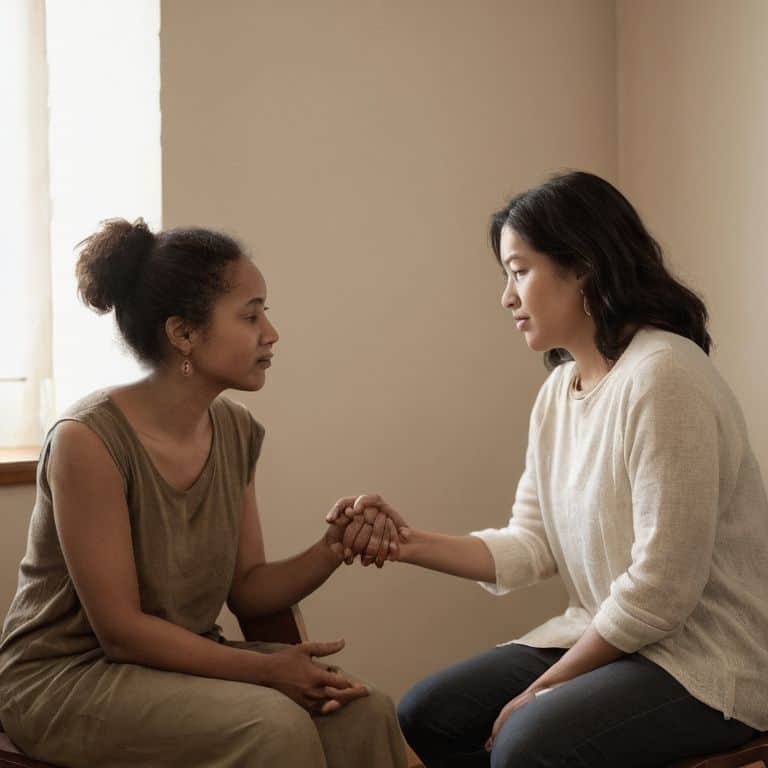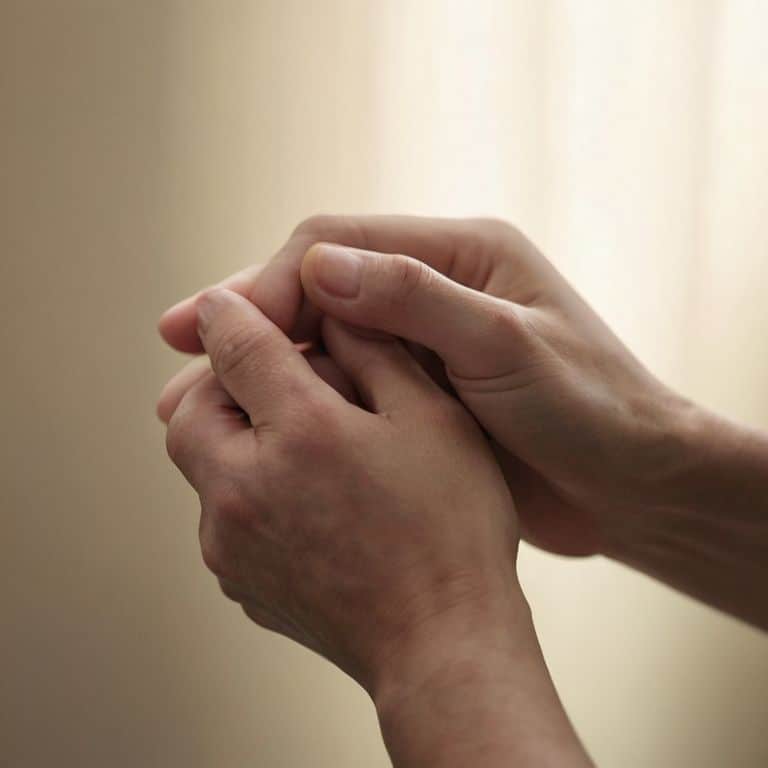I still remember the moment when I realized that learning how to apologize effectively wasn’t just about mending relationships, but also about healing myself. It was during a particularly tough conversation with a close friend, where I struggled to find the right words to express my regret. As someone who’s passionate about non-violent communication, I was frustrated by my own inability to apologize in a way that felt genuine and meaningful. This experience taught me that apologizing is not just about saying the right words, but about creating a safe space for growth and understanding.
In this article, I’ll share with you my personal approach to apologizing, one that’s rooted in empathy and mutual respect. You’ll learn how to craft apologies that are sincere and specific, and how to create a dialogue that fosters healing and trust. By the end of this guide, you’ll have the tools and confidence to apologize in a way that strengthens your relationships and brings you closer to others. My goal is to provide you with practical advice that you can apply to your daily life, helping you to navigate conflicts and difficult conversations with ease and compassion.
Table of Contents
- Guide Overview: What You'll Need
- Step-by-Step Instructions
- Mastering How to Apologize Effectively
- The Art of Sincere Apologies Finding Your Voice
- Verbal Cues for Effective Conflict Resolution Techniques
- 5 Essential Tips for Apologizing with Impact
- Key Takeaways for Effective Apologies
- The Heart of Apology
- Embracing the Power of Sincere Apologies
- Frequently Asked Questions
Guide Overview: What You'll Need

Total Time: 30 minutes to 1 hour
Estimated Cost: $0 – $0
Difficulty Level: Easy
Tools Required
- Empathy (self-reflection and understanding)
- Active Listening (to the other person’s perspective)
Supplies & Materials
- Sincerity (in your words and actions)
- Specific Examples (of what you are apologizing for)
- Commitment to Change (to prevent similar situations in the future)
Step-by-Step Instructions
- 1. Start with self-reflection: Before you apologize, take some time to understand what you’re apologizing for and how your actions affected the other person. Ask yourself questions like “What did I do wrong?” and “How can I prevent this from happening again in the future?” This inner dialogue will help you to be more genuine and sincere in your apology.
- 2. Choose the right time and place to apologize: Consider the timing and setting when you plan to apologize. You want to find a private and quiet spot where both you and the other person feel comfortable and won’t be interrupted. Make sure you both have enough time to talk without feeling rushed. Creating a safe space for the conversation is crucial for a successful apology.
- 3. Use “I” statements: When you apologize, use “I” statements to express your feelings and take responsibility for your actions. This helps to avoid blame and defensiveness, and it shows that you’re willing to own up to your mistakes. For example, instead of saying “You were hurt by what I did,” say “I realize that my actions hurt you, and I’m truly sorry for that.
- 4. Listen actively and empathetically: After you’ve apologized, give the other person space to express their feelings and concerns. Active listening is key in this step, so make sure you maintain eye contact, nod to show you’re engaged, and ask open-ended questions to encourage them to share their thoughts. Avoid getting defensive or interrupting, even if you feel like you’re being criticized.
- 5. Validate the other person’s emotions: Validation is a powerful tool in any apology. It shows that you acknowledge and respect the other person’s feelings, even if you don’t agree with their perspective. You can say something like, “I can see why you’d feel that way” or “I understand that my actions were hurtful.” This helps to create a sense of safety and understanding in the conversation.
- 6. Offer a specific plan to prevent similar situations: To rebuild trust, it’s essential to show that you’ve learned from your mistakes and are willing to make changes. Offer a specific plan or actions you’ll take to prevent similar situations in the future. This demonstrates your commitment to growth and improvement, and it helps the other person feel more secure in the relationship.
- 7. Follow through on your commitments: After you’ve apologized and made a plan, it’s crucial to follow through on your promises. This shows that you’re reliable, responsible, and genuinely committed to healing and rebuilding the relationship. If you don’t follow through, you risk damaging the relationship further and making it harder to repair in the future.
- 8. Be patient and give it time: Apologies and healing are processes that take time. Rebuilding trust and strengthening a relationship requires effort, commitment, and patience from both parties. Don’t expect things to go back to normal overnight, but instead, focus on making progress, one step at a time. Celebrate small victories and acknowledge the challenges you’re working through together.
Mastering How to Apologize Effectively

As I reflect on my experiences hosting board game nights and practicing partner acrobatics, I’ve come to realize that building trust is a crucial aspect of any relationship. When we make mistakes, it’s essential to acknowledge them and make amends to maintain that trust. The art of sincere apologies is not just about saying the right words, but also about being mindful of our nonverbal cues, such as body language and tone of voice. By being genuine and empathetic in our apologies, we can create a safe space for open communication and effective conflict resolution techniques to flourish.
In my work as a relationship coach, I’ve seen how cultural differences can impact the way we apologize. What may be considered a sincere apology in one culture may not be perceived the same way in another. Being aware of these cultural nuances can help us navigate apologies with sensitivity and respect. By taking the time to understand the other person’s perspective and verbal and nonverbal apology cues, we can craft apologies that are tailored to their needs and promote healing.
When it comes to putting our apologies into words, I often recommend writing an apology letter as a therapeutic exercise. This can help us process our emotions and gather our thoughts before having a conversation. Apology letter writing tips can be useful in this process, as they provide a framework for expressing remorse and making amends. By combining these tips with a genuine willingness to listen and learn, we can create a powerful apology that helps to rebuild trust and strengthen our relationships.
The Art of Sincere Apologies Finding Your Voice
To truly master the art of apologizing, it’s essential to find your authentic voice. This means being genuine and speaking from the heart, rather than reciting a scripted phrase. I’ve seen it time and time again in my workshops: when we apologize from a place of sincerity, the other person is more likely to receive our apology and work towards healing. It’s not about using fancy words or trying to be overly eloquent; it’s about being real and taking ownership of our actions.
By speaking from a place of vulnerability and empathy, we can create a safe space for the other person to express their feelings and needs. This is where the real magic happens, and relationships can begin to mend. I always encourage my clients to focus on their intentions and values, rather than trying to follow a specific formula. When we apologize with integrity and compassion, we open the door to deeper connection and understanding.
Verbal Cues for Effective Conflict Resolution Techniques
When navigating conflicts, our words are just the beginning. Verbal cues like tone, pace, and volume can either escalate or diffuse tension. I’ve seen it time and time again in my board game nights – a raised voice can turn a friendly competition into a heated argument. To resolve conflicts effectively, it’s essential to be mindful of our non-verbal communication. Speak clearly and calmly, maintaining a gentle tone that invites open conversation.
By doing so, we create a safe space for meaningful dialogue to unfold. I recommend starting with a simple script: “I feel [emotion] when [action] happens, and I’d appreciate it if [desired outcome].” This helps to express our needs without placing blame, allowing the other person to respond thoughtfully. Remember, effective conflict resolution is not about “winning” an argument, but about understanding each other’s perspectives and finding common ground.
5 Essential Tips for Apologizing with Impact
- Start with a clear acknowledgement of your mistake, taking ownership of your actions without making excuses
- Use ‘I’ statements to express your feelings and thoughts, rather than blaming or attacking the other person
- Specify exactly what you’re apologizing for, showing that you understand the impact of your behavior
- Offer a concrete plan for preventing similar situations in the future, demonstrating your commitment to growth and change
- Listen actively to the other person’s response, validating their emotions and responding with empathy and understanding
Key Takeaways for Effective Apologies
Apologizing is not just about fixing the immediate issue, but about rebuilding trust and strengthening relationships through sincere communication and active listening
Using specific verbal cues, such as acknowledging the other person’s feelings and taking clear responsibility for your actions, can significantly improve the effectiveness of your apologies
Practicing self-reflection and identifying the underlying reasons for your mistakes can help you craft more heartfelt and meaningful apologies, leading to deeper healing and more resilient relationships
The Heart of Apology
An apology is not just a wordsmith’s trick, but a courageous act of vulnerability that says, ‘I see you, I hear you, and I’m willing to grow with you’ – it’s the bridge that reconnects us, strengthening the bonds of our relationships and healing the cracks in our own hearts.
Mia Campbell
Embracing the Power of Sincere Apologies

As we’ve explored the art of apologizing effectively, it’s clear that mastering this skill is a journey, not a destination. We’ve discussed the importance of acknowledging our mistakes, taking responsibility, and making amends. By following these steps and practicing sincere communication, we can begin to heal relationships, rebuild trust, and find peace of mind. Remember, apologizing is not a sign of weakness, but rather a sign of strength and a willingness to grow.
As you move forward, I encourage you to embrace the power of apologies as a tool for transformation. By letting go of pride and ego, we can create space for authentic connections and deeper relationships. So, the next time you need to apologize, take a deep breath, be brave, and remember that healing is just a conversation away. With time and practice, you’ll become more comfortable with the process, and your relationships will flourish as a result.
Frequently Asked Questions
What if the person I'm apologizing to doesn't accept my apology, how can I still move forward?
That can be really tough. If someone doesn’t accept your apology, try not to take it personally. Instead, acknowledge their feelings and give them space. You can say, “I understand you’re still hurt, and I respect that” – this shows you’re committed to healing, even if they’re not ready yet.
How do I apologize for something that was a long time ago, but is still affecting my current relationship?
When apologizing for something from the past, it’s essential to acknowledge the ongoing impact on your relationship. Try saying, “I’ve been thinking a lot about what happened, and I realize it’s still affecting us today – I want to take responsibility and work towards healing together.
What's the best way to apologize to someone who has been hurt by my actions, but I'm not sure they're ready to talk about it?
When someone’s hurt, they might not be ready to talk, and that’s okay. Start by writing a heartfelt letter or email, acknowledging their pain and taking responsibility for your actions. This can help them process their emotions before a conversation, and gives you a chance to show you’re committed to making things right.
